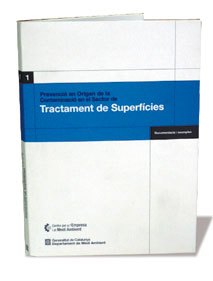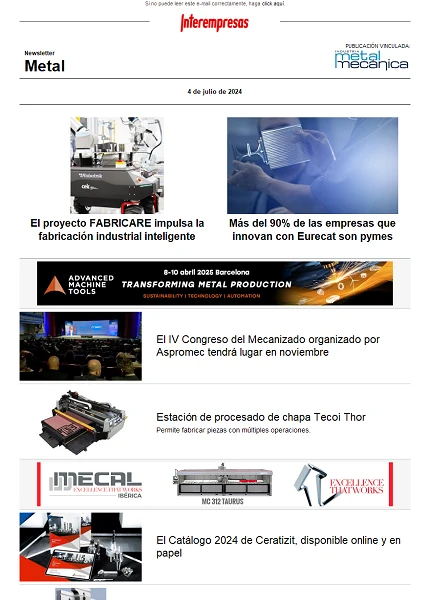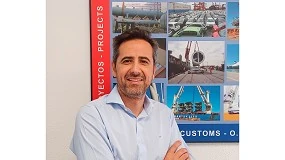Description of the processes of surface treatment

In addition, the streamlining of the consumption of water, for example, and improve internal operations, helped to make a company more competitive and reduce the generation of residual currents.
Any cycle of preparamiento in which the pieces to treat presented remains of oil as oxide, you should remove mechanically POPs, before introducing the pieces directly in the line of process, since it would facilitate the more uniform elimination of oxides and the oillater.
Pickled mechanical
Chemical degreasing
In the degreasing solvent, they are used both in vapor phase and cold. Eliminate fats, paints and varnishes.
In vapour phase, are typically used solvents chlorates, which evaporate in the bathroom to produce solvent vapors.
Then citarán the most commonly used solvents currently for the degreasing:
- trichloroethane, trichloroethylene i perchloroethylene,
- methylene chloride,
- triclorofluoretano,
- I cloroformo, as in Basic.
In the case of the use of the degreasing solvent cold, used the same compounds, but applied by immersion.
In the chemical degreasing with detergents (commercial), is manages to eliminate any kind of fat due to the presence of elements surfactants that decrease the surface tension of the bathroom and added to an alkaline solution. It is a system very used in Catalonia, for example.
In alkaline media used to degrease parts you can find the following formulation:
- caustic soda 40 g/l
- sodium carbonate 25 g/l
- trisodium phosphate 12·H2O 10 g/l
- sodium pehtahydrated 5·H2O 10 g/l
- Moisturizers 2-5 g/l
- variable metal complejantes
In this environment, the optimal conditions of work are as follows:
- pH 12-14
- temperature 60-90 ° C
On the other hand, to enhance the mechanical effect of cleaning, is usually used some mechanism of agitation in the environment, such as air, for example.
2.1.4 Degreasing ultrasonic
2.1.5 Degreasing electrolytic
The basic formulation of the medium is as follows:
- caustic soda 50-60 g/l
- trisodium phosphate 12·H2O 10-20 g/l
- sodium gluconate 10-30 g/l
In this almost, frequently working conditions are as follows:
- pH 12-14
- temperature 80 ° C
- density of the current 5-10 A/dm2
2.1.6 Activated acid/pickling
The main compounds that are used can include:
- hydrochloric acid,
- sulphuric acid,
- inhibitor agents.
Also noted the use of two mixed acids, although some special activators of metals using ammonium biofloruro (F2HNH4) as a substance of activation. After the decapeado, the area contains chemicals that are generated by the action of acids on oxides. Then, therefore, these products through its neutralization are removed and later, cleaning with water.
2.2. The main galvanic processes
According to the material to be coated and the characteristic dinales which is intended to coating, using different techniques and materials. Below are the main treatment processes that are carried out in Catalonia.
In the case of the coating electrolytic, the mechanism of coating is to immerse the surface coating, cleaned previously by any of the procedures referred to above, an appropriate electrolyte, which has the metal ions to deposit; the piece to cover is the cathode in the electrolytic bucket.
On the other hand, the anode is composed of bars of high purity of the metal deposition, the Mission of which is to maintain constant the concentration of metal ions in the electrolyte.
The thickness of the coating is regulated by variation of intensity of the current employee and time lasting process. It must be stressed, also, the presence of various - moisturizing agents, polishers, complexants, etc - which, in various capacities, are also part of the bathroom.
Within the sector of the industry of the finish is surfaces in Catalonia can be found, mainly industrial processes described below, which, with various functions, are also part of the bathroom.
Plated electrolytic and passivation
Currently there are three basic forms of deposit the zenc via electrolytic:
- acid zinc,
- alkaline zinc,
- Zinc cianurado
- chloride of zinc 62-85 g/l
- chloride potassium 186-255 g/l
- acid bórico 30-38 g/l
- humectantes 60-90 g/l
- polishes 0,5-1 g/l
The conditions of work in this formulation are the following:
- temperature 21-35 ºC
- density of current 1-4 To/dm2
- tension 1-18 V
- pH 4,8-5,4
More used that the previous is the solution of alcaline zinc. In this case, the zinc reacts with the alcaline giving zincados soluble, according to the following reaction, in which also it frees hydrogen:
Zn + 2(OH)– --> (ZnO2)2– + H2
In this case, the basic formulation more common is the following:
- oxide of zinc 9,5 g/l
- hydroxide sódico 90-120 g/l
- polishes 10-50 ml/l
- temperature 20-30 ºC
- density of current catódica 2-4 To/dm2
- voltage 2-15 V
The ultimo type of zincado, every time less used that the zincado sour and alcaline, is the one of zincado cianurado, in shape alcaline, that bases in the following reaction:
Zn(CN)2 + 2 NaCN --> Na2Zn(CN)4
The basic formulations depend fundamentally of the concentration of cyanide sódico varying of the following way:
Regarding the conditions of work, the most used are the following:
- temperature 20-30 ºC
- density of current catódica 2-6 To/dm2
- voltage 2-15 V
Once has realised the process of zincado of the pieces, to increase his resistance to the corrosion, subjects them to a process of chromic passivation or cromatizado. This passivation can be of four types:
- blue passivation (resistance to the low corrosion),
- green passivation (high resistance to the corrosion),
- yellow passivation (resistance to the similar corrosion to the previous),
- black passivation (resistance of half type).
Up to now continuous using the chromium hexavalente in the formulations for the passivation.
Subshells and finishes
This type of process is the one who designates general.
The process of niquelaje uses usually like a subcapa to treat ironinging, aluminium, brass, copper, zinc and his alloys.
In some particular cases, the pieces are finished with a coating of chemical nickel of specific characteristics (hardness, lubrication, etc…).
Since the reactions that produce in the niquelaje chemical are catalytic, that is to say, initiates them the same material to recubrir, is very important in this type of coating achieve a good adherencia and therefore, clean in depth the pieces to treat.
The common basic formulation is:
- sulphate of nickel 7·H2Or 250-350 g/l
- chloride of nickel 6·H2Or 60-90 g/l
- sour bórico 30-60 g/l
- polishes 20-30 g/l
- humectantes 2-5 g/l
With these raw materials, the conditions of work required are the following:
- temperature 50-65 ºC
- density of current 1-10 To/dm2
- pH 4-5
- tension 1-16 V
The general reaction that takes place for the deposition of the nickel is the following:
2 Neither2+ + (BH4)– + 4 OH– 2 Neither + (BO2)– + 2 H2Or + 2 H2
As already it has commented, the niquelaje electrolytic employs in a lot of cases like a base to favour the deposition of another metal (chromium, mainly).
The bathrooms of chromium studied, like the raw materials of use more generalised can stand out :
- trióxido of chromium 150-400 g/l
- sour sulphurous 2,5-4 g/l
- catalysts 0,5-1 g/l
The conditions of work followed are:
- temperature 40-50 ºC
- density of current 5-55 To/dm2
- insoluble anodes 93% Pb, 7% Sn
The bathroom of copper also is quite used inside the sector. The formulation of the bathroom is miscellaneous and can classify according to:
- alcaline copper cianurado,
- alcaline copper without cyanides,
- sour copper with sulphurous acids,
- sour copper with acid bórico.
For the alcaline copper cianurado, the composition is:
- cyanide of copper 22,5 g/l
- cyanide sódico 34,0 g/l
- carbonate sódico 15,0 g/l
- hydroxide sódico control of pH
With regard to the conditions of work, are these to the conditions of work, are these:
- temperature 32-43 ºC
- density of current. 10-15 To/dm2
- pH 12-12,6
- anodes earn and steel
uses for the fine thicknesses especially type of metals of base and acts like a layer of bases for new layers of other types of bathroom of copper. By this reason, his application is very widespread.
Exists also a version of high concentration, that arrives until the 120 g/l of cyanide of copper and 135 g/l of cyanide sódico.
The bathroom of alcaline copper without cyanides has the following composition:
- pirofosfato of copper 345,0 g/l
- hydroxide potassium 18,0 g/l
- ammonium (29%) 1 ml/l
With regard to the conditions of work of the bathroom, are these:
- temperature 43-60 ºC
- pH 8,2-9,2
- density of current 1-7,5 To/dm2
- anodes earn
Is a subcapa for bathrooms of brilliant nickel and chromium. It applies on any metal that present a layer of copper. Also it uses in circuits printed matter.
For the case of the sour copper like sulphurous acid, the composition of the bathroom is formed by:
- sulphate of copper 195-248 g/l
- sour sulphurous.................................................. 30-75 g/l
With regard to the conditions of work are :
- temperature 21-49 ºC
- density of current 2-10 To/dm2
- anodes earn
Is an applicable bathroom on any ferrous metal with previous base of copper; also it can use like a low coating bathrooms of nickel- chromium, to offer more resistance to the corrosion. It uses a lot in the manufacture of circuits printed matter, since they achieve layers very final of coating, although it also allows thick coatings.
With regard to the bathroom of sour copper with acid bórico, the composition is the following:
- fluoborate of copper 225,0 g/l
- sour fluobórico control of pH
Conditions of work:
- pH 0,8-1,7
- temperature 27-77 ºC
- density of current 7,5-12,5 To/dm2
- anodes earn
treats of a process that can offer any type of thickness to the pieces of any basic metal that have a base of copper. Used also in the manufacturing of circuits printed matter.
Another type of coating that uses the nickel like base is the bathroom of brass. In this case, the most employed formulation is the following:
- cyanide of copper 60-75 g/l
- cyanide of zinc 8-30 g/l
- cyanide sódico 130-150 g/l
- caustic soda 3-4 g/l
- ammonia 1-5 g/l
- polishes 1-10 g/l
In this process, the conditions of work are :
- temperature 40-60 ºC
- pH 9,5-11,5
- density of current 0,5-2 To/dm2
- anodes Cu-Zn 80% Cu, 20% Zn
Another bathroom that needs a first treatment with nickel is the one of argent. The formulation in this process is:
- cyanide of silver 30-40 g/l
- cyanide potásico 160-200 g/l
- polishes 0,1-10 g/l
and the conditions of work are:
- temperature 22-30 ºC
- density of current 0,5-2 To/dm2
- anodes silver(99,99%)
Finally, a last very common process, that also needs a first layer of nickel is the bathroom of gold. In this case, the formulation employed is the following:
- double cyanide of gold and potassium: 0,5-2 g/l
- phosphate disocio:10-20 g/l
- polishes:1-5 g/l
The conditions of work more used are:
- temperature 50-70 ºC
- pH 11-12
- density of current 0,2-0,6 To/dm2
- anodes titanium platinizado (inert)
Inside this type of general treatments, has to mention the process of coating with tin by electrolytic bathroom in which they take part the tin sódico, acetate sódico, caustic soda,
Perorado sódico and water. The temperature of work is of 70 ºC.
Basically, gives the process because the perborato sódico oxida the ion estanado to estánico.
Conversion of surface processes
- phosphatation i pavonaje, in the case of the iron and steel,
- anodizing of aluminium and its alloys.
The phosphatation consists in the formation of layers of phosphate on the surface of the metal to deal with. In addition to protecting against corrosion, this process facilitates the mechanical work of processed metals.
Phosphatation process is achieved by introducing the piece to cover in a dilute solution of phosphoric acid, which reacts with the iron in the reaction:
Fe + 2 H3PO4 - > Fe(H__2__PO__4_)2 + H2
For its part, the pavonaje is, in essence, the oxidation of the surface by controlling the process so that formation of ferric oxide which, given its compactness, protects the iron.
This oxidation is achieved in several ways:
- stucco (Anodic oxidation), with a solution of water with hiposulfito;
- chemically (oxidation alkaline), with sodium hydroxide (I) sodium nitrate or potassium;
- chemically also (bath salts), a bathroom consisting of a mixture of nitrates of sodium and potassium, which is compounded by manganese dioxide.
On the other hand, there is also the process of anodizing of aluminum. The Anodic oxidation of aluminum can be considered a process of passivation accelerated through the passage of the DC. In fact, it's its oxidation by electrolysis doing piece to try to act as an anode. It is a very important application, in most cases, serving for the protection of aluminium parts for the construction.
The mechanism that takes place is as follows: when the current ele´eléctrica passes through the electrolyte, where the pieces of aluminum to oxidize make anode, forms a layer of aluminium oxide (alumina) that grows slowlyuntil you reach the order of 25-60 microns thick.
In this case, unlike other processes, the treatment to be given to the aluminium is as follows:
- degreasing chemical,
- washing,
- satinaje of aluminium (alkaline),
- washing,
- nitric acid decapaje,
- washing,
- anodizaje of sulphuric acid,
- washing,
- colour,
- washing,
- sealed with hot water.
To make the degreasing chemical, the most used formulation is as follows:
- carbonate sodium 40 g/l
- sodium pehtahydrated 20 g/l
- sodium gluconate 10 g/l
- phosphate disocio 20 g/l
- Moisturizers 1-5 g/l
On the other hand, to make the process of satinaje of aluminium, the basic formulation is:
- caustic soda 50-60 g/l
- sodium gluconate 20-30 g/l
- Moisturizers 1-5 g/l
In the decapaje with nitric acid, the formulation is:
- nitric acid 500 ml
- water 500 ml
The working temperature in this case is the environment.
The anodizing process itself, there are different types of electrolytes that are used in Anodic oxidation, although the most important is the sulfuric acid to 20% by weight.
- temperature 21-23 ° C
- 0, 5-1 Anodic current density, 5 A/dm2
As Anodic treatment of aluminium, sulfuric acid attack surface dissolving it partially, when the concentration of aluminium in the middle reaches a specific value, you must proceed to the dilution of electrolyte.
In any case must be coloration of aluminium through the use of dyes, both organic and inorganic. The concentration of each dye depends on each case. Working conditions also depend on each dye in particular, as well as the degree of intensity of defendant absorption.
Finally, in the process of sealing is used distilled water to 98 ° C, to hydrate alumina layer.
Split end study made galvanic processes, described, then the Electropolishing process.
Electropolishing
The piece serves as an anode in a VAT containing hot concentrated acids.
In this it, the composition of the electrolyte is as follows:
The piece acts as to ánode, in a bucket that conté acids concentrated hot.
- 90% phosphoric acid (weight)
- 10% sulphuric acid (weight)
- Glycerin 1% (weight)
Thus, the working conditions are these:
- temperature 80-90 ° C
- 2-3 minutes
- density of the Anodic current 10-50 A/dm2












































































